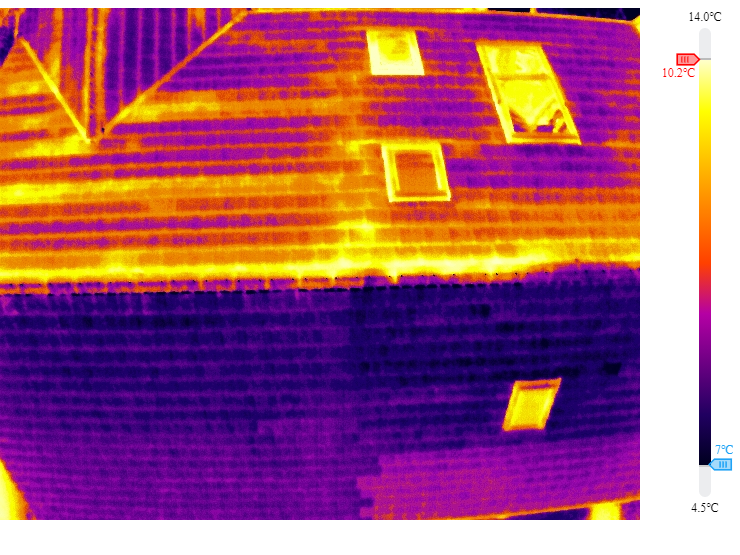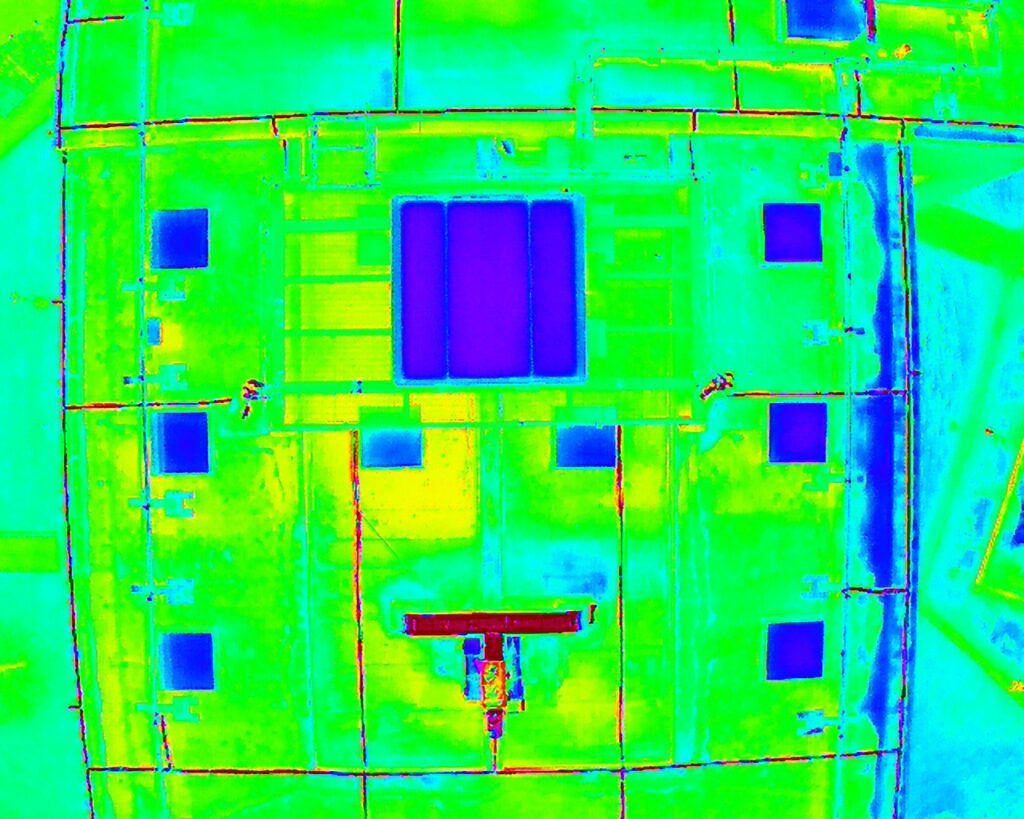
Thermal drone surveys have revolutionised the way we inspect and analyse various environments, from buildings to vast landscapes. By equipping drones with specialised thermal cameras, we can visualise heat and temperature differences that are invisible to the naked eye, providing valuable insights for a wide range of applications.
How Thermal Drones Work
The science behind thermal drone surveys lies in infrared radiation. Every object with a temperature above absolute zero emits some level of infrared energy. A drone’s thermal camera, or thermographic camera, detects this infrared radiation and converts it into a digital image called a thermogram. Different colors in the image represent different temperatures, with warmer areas often appearing in brighter colors (like red, orange, or yellow) and cooler areas in darker colors (like blue or purple).
The cameras don’t see through objects; they simply measure the heat radiating from the surface. The data they collect is highly accurate, but it can be affected by environmental factors like atmospheric temperature, humidity, and the distance from the object being surveyed.
Applications of Thermal Drone Surveys
Thermal drones are incredibly versatile and are used across numerous industries to detect issues and improve efficiency.
Building and Construction

Thermal drone surveys are a game-changer for building inspections. They can quickly and safely identify a variety of issues, including:
- Heat Loss and Missing Insulation: By flying over a building, a thermal drone can pinpoint areas where heat is escaping, helping homeowners and businesses improve energy efficiency and lower utility bills.
- Water Leaks and Moisture Intrusion: Damp areas often have a different temperature than their surroundings due to evaporation. Thermal drones can detect these cold spots on roofs or behind walls, even when there are no visible signs of a leak.
- Structural Defects: Temperature anomalies can indicate structural weaknesses or cracks in a building’s fabric.
Electrical and Industrial Inspections
For electrical systems and industrial equipment, overheating is a common sign of a problem. Thermal drones can:
- Identify Overheating Components: They can safely inspect power lines, solar panels, and substations from a distance, detecting hot spots that could lead to electrical fires or equipment failure.
- Monitor Machinery: In factories, thermal surveys can be used for preventative maintenance by identifying abnormal temperatures in machinery before a breakdown occurs, reducing unplanned downtime.
Wildlife and Environmental Monitoring
Thermal drones are an effective, non-invasive tool for ecological surveys and conservation efforts.
- Animal Population Counts: They can quickly locate and count animals, especially nocturnal species, in dense vegetation or large, inaccessible areas without disturbing them.
- Search and Rescue: Thermal imaging can be used by first responders to locate lost individuals or victims of a disaster, even in low light, dense foliage, or smoky conditions.
The Benefits of Using Thermal Drones ✅
The use of drones for thermal surveys offers several distinct advantages over traditional methods.

- Improved Safety: Drones eliminate the need for personnel to access dangerous or hard-to-reach locations, such as high roofs, power lines, or hazardous industrial sites.
- Cost and Time Efficiency: A drone can cover a large area in a fraction of the time it would take a traditional inspection crew. This reduces labor costs and allows for quicker project turnaround.
- High-Quality Data: Drones can be programmed to follow precise flight paths, ensuring consistent and accurate data collection. The aerial perspective also provides a comprehensive view that would be difficult to obtain from the ground.
- Non-Invasive: The surveys are conducted from a distance, causing no disruption to ongoing operations, wildlife, or the structure being inspected.
For further information on how Drone Scotland can help with your thermal survey’s contact us at office@dronescotland.com or 0131 203 3077.
